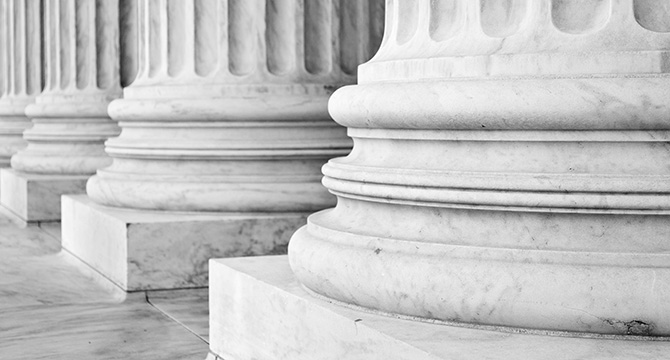
In a non-precedential decision issued in In re Bhagat, the Federal Circuit affirmed the decision of the USPTO Patent Trial and Appeal Board (PTAB) that claims directed to certain lipid compositions were ineligible for patenting under 35 USC § 101. Did the court do more or less harm by rendering its decision without much explanation?
The Claims At Issue
The claims at issue were pending in U.S. Patent Application No. 12/426,034. Claim 65 was the broadest claim considered by the court:
65. A lipid-containing formulation, comprising a dosage of omega-6 and omega-3 fatty acids at an omega-6 to omega-3 ratio of 4:1 or greater, contained in one or more complementing casings providing controlled delivery of the formulation to a subject, wherein at least one casing comprises an intermixture of lipids from different sources, and wherein
(1) omega-6 fatty acids are 4–75% by weight of total lipids and omega-3 fatty acids are 0.1–30% by weight of total lipids; or
(2) omega-6 fatty acids are not more than 40 grams.
The examiner found that walnut oil and olive oil contain omega-6 and omega-3 oils in amounts within the claimed ranges, and rejected the claims under the “product of nature” paradigm based on the conclusion that the claimed formulations are not markedly different from naturally occurring walnut oil or olive oil.
The examiner also rejected the claims as being anticipated by U.S. Patent No. 5,549,905 (directed to a nutritional composition that includes omega-6 and omega-3 fatty acids) and publications of nutritional analyses of olives and walnuts showing that those natural products include omega-6 and omega-3 fatty acids in the ratios and amounts claimed.
The PTAB upheld all rejections.
The Federal Circuit Decision
The Federal Circuit decision was authored by Judge Newman and joined by Judge O’Malley and Taranto.
The decision summarizes the basis of the examiner’s rejections, the reasoning behind the PTAB’s affirmance, and the Applicant’s arguments on appeal. For the most part, the court states that each PTAB finding was “correct” without explanation.
The Applicant argued that the claim language reciting an “intermixture of lipids from different sources” made the formulation markedly different from naturally occurring products, and that the formulation provided synergistic benefits and avoided “concentrated delivery of specific phytochemicals that may be harmful in excess.” The Board had held that there was no evidence of record that could support that a mixture of oils from different sources is different from oil from one source. The Federal Circuit agreed, stating:
The Board found, and we agree, that the Applicant has not shown that the claimed mixtures are a “transformation” of the natural products, or that the claimed mixtures have properties not possessed by these products in nature.
The Federal Circuit acknowledged the Applicant’s arguments that “casings providing controlled delivery” “do not exist as natural products,” but did not address those arguments in its § 101 analysis. It did address similar arguments in its anticipation analysis, agreeing with the PTAB that the terms “casing” and “dosage” do not impart patentability, finding:
[T]he specification states that these claim elements are not limiting, and does not describe any assertedly novel characteristics of these components or their formulations.
Thus, the court affirmed all rejections.
The USPTO Subject Matter Eligibility Examples
Could Bhagat have invoked Example 28 of the USPTO’s Subject Matter Eligibility Examples? That example relates to a vaccine based on a naturally occurring peptide. According to the example, a claim reciting “A vaccine comprising: Peptide F; and a pharmaceutically acceptable carrier” does not satisfy § 101 because the carrier could be water, another natural product. On the other hand, a claim reciting “A vaccine comprising: Peptide F; and a pharmaceutically acceptable carrier selected from the group consisting of a cream, emulsion, gel, liposome, nanoparticle, or ointment” does satisfy § 101 because the recited carriers change the physical characteristics of the mixture.
The ‘034 application does not appear to use the term “casing,” but does disclose the use of a “controlled release capsule.” However, since such a capsule may not “change the physical characteristics of the mixture” contained therein, it may not fall under the patent-eligible claim of this USPTO example.

